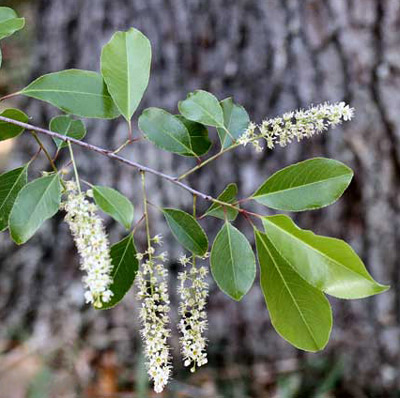Nutrition
The larvae of the Red-Spotted Purple Butterfly typically use the leaves of the plant they hatched on as their main food source. These leaves come from trees and shrubs such as apple, willow, cherry, birch, and cottonwood (Weed, 1926). Pictured below is an image of Black Cherry tree leaves, a common host plant and food for larvae. Click on the image to visit the University of Florida's Featured Creatures page and view more pictures. Typically, the larvae feed in the dark of night, using the daylight as a time to rest (Weed, 1926). The caterpillar eats and grows for several weeks before creating its pupa, also known as a chrysalis and becoming a butterfly (Weeds, 1926).
Adult Red-Spotted Purple Butterflies infrequently stop on flowers to drink nectar. More frequently they get their nutrients from decaying fruit, sap from trees, and even dung (Hall, 2013). As mentioned in the habitat page, these butterflies enjoy being in damp areas and therefore are also found feeding and drinking on mud and watery puddles (Hall, 2013). The Red-Spotted Purple Butterfly uses a proboscis as a way to take up nutrients (Scoble, 6). To learn more about what a proboscis is and how this butterfly utilizes it, please visit our adaptations page. Once in the body, nutrients are spread within the butterflies circulatory system. This circulatory system, however, is very inefficient at delivering these nutrients. The butterflies circulatory system is considered an open circulatory system, which puts a limit on how large the butterfly can be (Kearny, 2010).
Home
Continue to Life Cycle page
